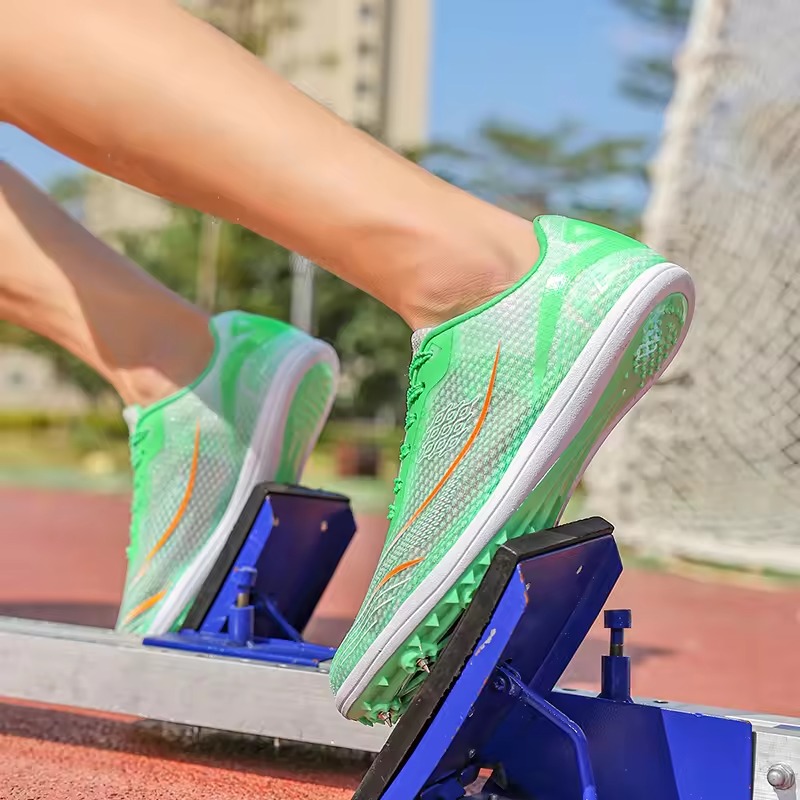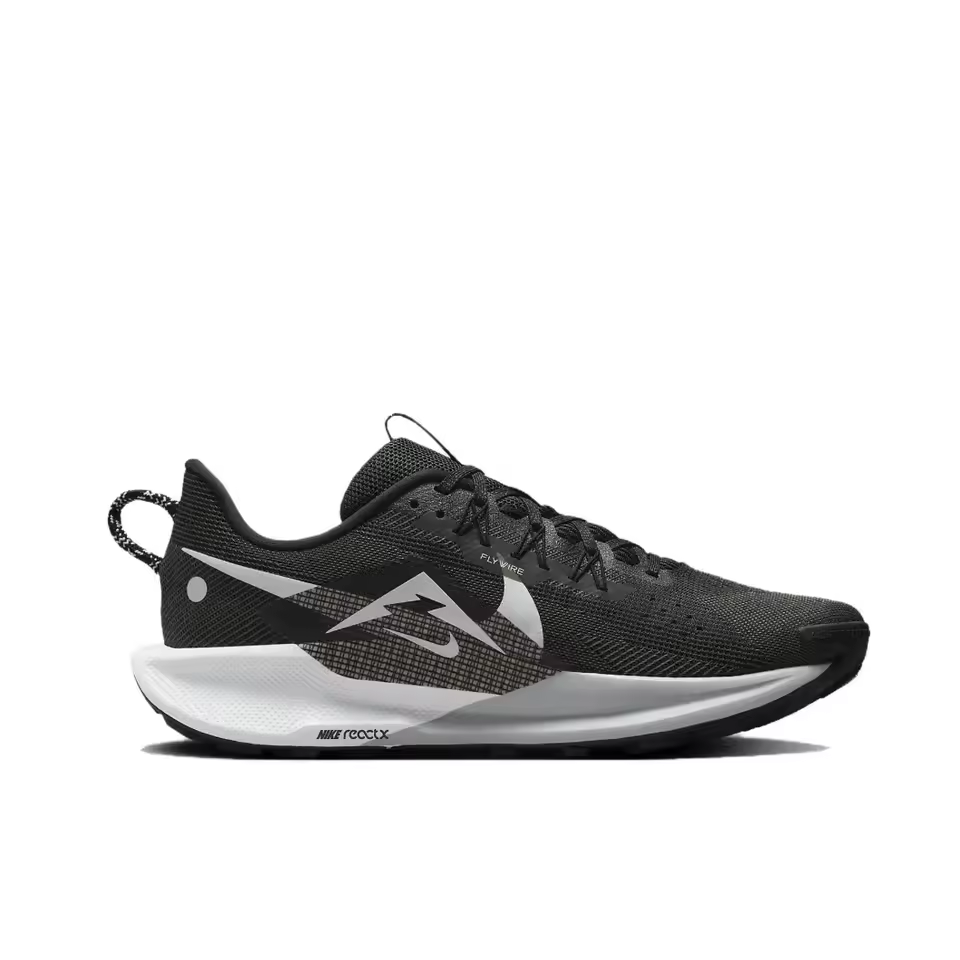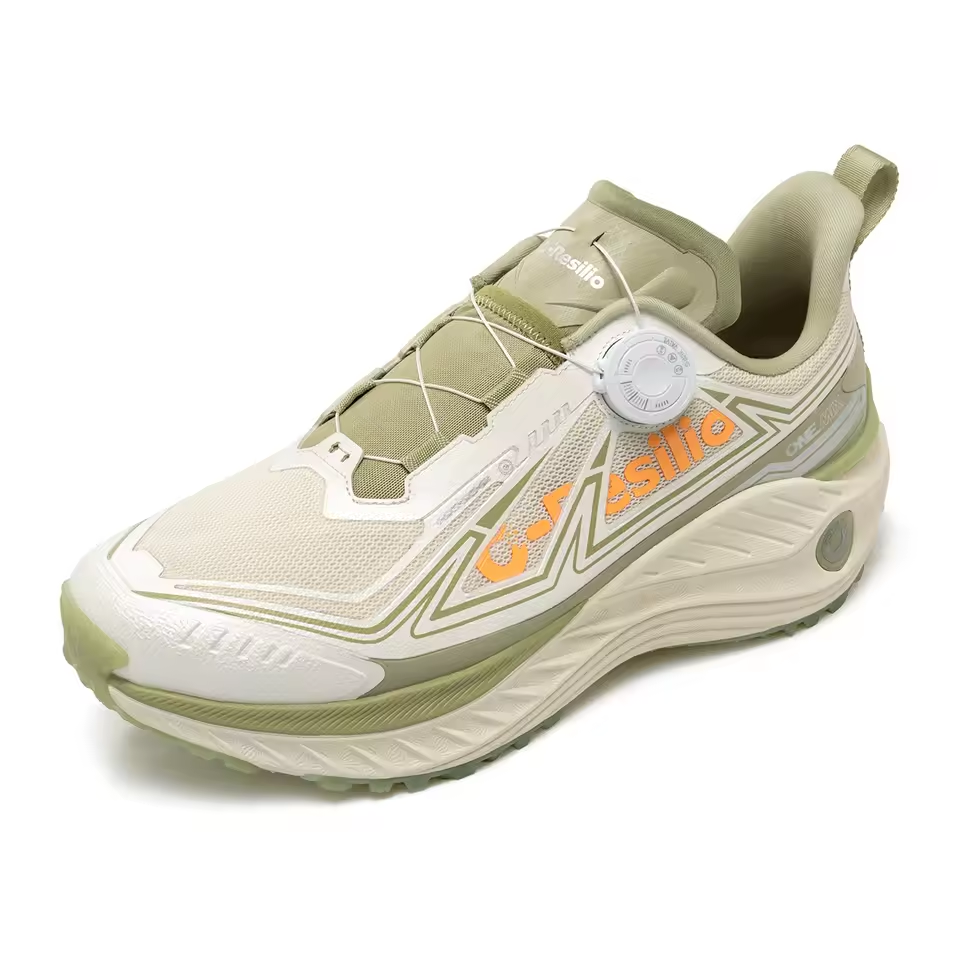Identifying Shin Splints: Symptoms and Causes
Understanding shin splints begins with recognizing the signs and underlying factors. Shin splints often emerge as a sharp pain in the lower leg. The pain usually feels worse during and after exercise. You may also notice swelling in the front part of your lower legs. If you have shin splints, even touching your shins lightly might feel tender and sensitive.
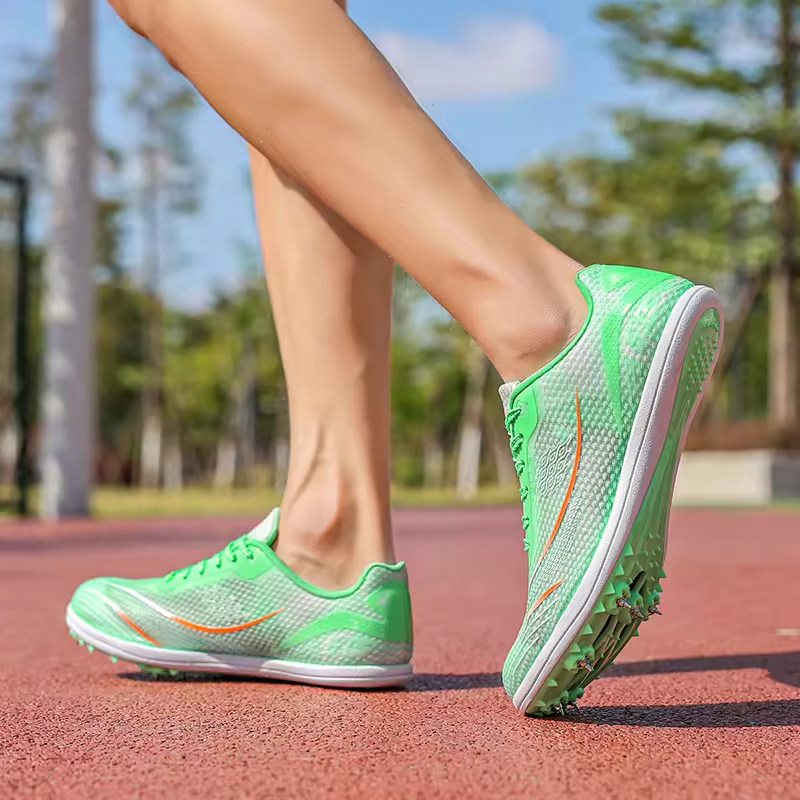
The primary cause of shin splints is stress on your shinbone and the tissues attaching your shinbone to your muscles. When these muscles and tendons become overworked, it leads to inflammation and pain. There are several risk factors, apart from wearing incorrect footwear, that contribute to shin splints. Flat feet or abnormally rigid arches can place extra pressure on the muscles in your legs. Not stretching properly before running, running on hard surfaces, and suddenly increasing the intensity of your workouts could also pave the way for shin splints.
Runners, dancers, and military recruits often face this issue because of the high-impact nature of their activities. The pain might dull when not active, but without proper care, the condition can worsen. It’s essential to address shin splints early on. Wearing the best running shoes for shin splints can play a significant part in preventing and alleviating pain. A good pair of shoes will provide the appropriate support and cushioning needed for your feet. The next sections will delve into the importance of proper footwear and what key features to look out for when selecting the best running shoes for shin splints.
Importance of Proper Footwear for Preventing Shin Splints
Selecting the right footwear is crucial for preventing shin splints. Shoes that don’t fit well or provide enough support can lead to unnecessary stress on your shins. This can worsen or cause shin splints.
Running or walking in shoes that lack adequate cushioning can force your shin muscles to absorb too much impact. This increases the risk of injury. Moreover, if the shoes do not align properly with your foot’s natural structure, they can contribute to the problem. Flat-footed runners, or those with high arches, need shoes designed for their specific foot type.
The best running shoes for shin splints offer several benefits. They help in reducing the impact on your lower legs during a run. They also provide proper alignment, which helps in distributing weight evenly across your feet. This in turn minimizes the strain on shins. Shoes with good arch support can prevent the overpronation or underpronation that often leads to shin splints.
So, to avoid this painful condition, invest in high-quality running shoes. Look for ones that give you the right balance of cushioning, support, and fit. This goes a long way in helping you stay active and free from shin splints.
Key Features to Look for in Running Shoes for Shin Splints
When searching for the best running shoes for shin splints, certain features are essential. First, look for shoes with proper cushioning. Cushioning helps absorb shock and reduces impact on the shins. Next, focus on support. Shoes should support your arch type, whether you have flat feet or high arches. A snug fit is crucial to prevent unnecessary movement that can strain shin muscles. Look for running shoes with a well-designed midsole. The midsole should offer stability and help control pronation. Also, consider shoes with a flexible forefoot. This allows for a natural foot roll during your stride. Finally, a durable outsole is important. It provides traction and can help extend the shoe’s lifespan.
Remember to choose running shoes that match your foot’s specific needs. This can prevent shin splints and keep you running pain-free. Balance cushioning, support, and fit when making your choice. It’s the best way to protect your shins. Keep these features in mind to find shoes that aid in shin splints relief.
Top Recommended Running Shoes for Shin Splints Sufferers
With the need for proper footwear established, let’s explore the best running shoes for shin splints. These recommendations aim to combine comfort, support, and durability to ease your symptoms.
- Asics Gel-Kayano: This shoe stands out for its gel cushioning system. It offers excellent shock absorption and is great for overpronators.
- Nike Air Zoom Structure: Known for its firm support, this shoe is ideal for runners who need extra stability. The dynamic fit technology ensures a secure and comfortable run.
- Brooks Adrenaline GTS: An all-rounder with balanced cushioning and reinforced stability. It’s a top choice for those seeking reliable arch support.
- Saucony Guide: If you have flat feet, the Saucony Guide’s structured cushioning can help. It maps the foot for a tailored fit and controlled guidance.
–Hoka One One Clifton: The Hoka One One models are famous for their thick, plush cushioning. This shoe is great for absorbing impact and reducing stress on the shins.
- New Balance Fresh Foam 1080: With its generous cushioning and comfortable fit, this shoe is a favorite among runners for its impact protection.
Remember to test these shoes and see which one fits best. Look for cushioning, arch support, and a snug fit to combat shin splints. With the right pair, your running experience can improve significantly, keeping shin splints at bay.
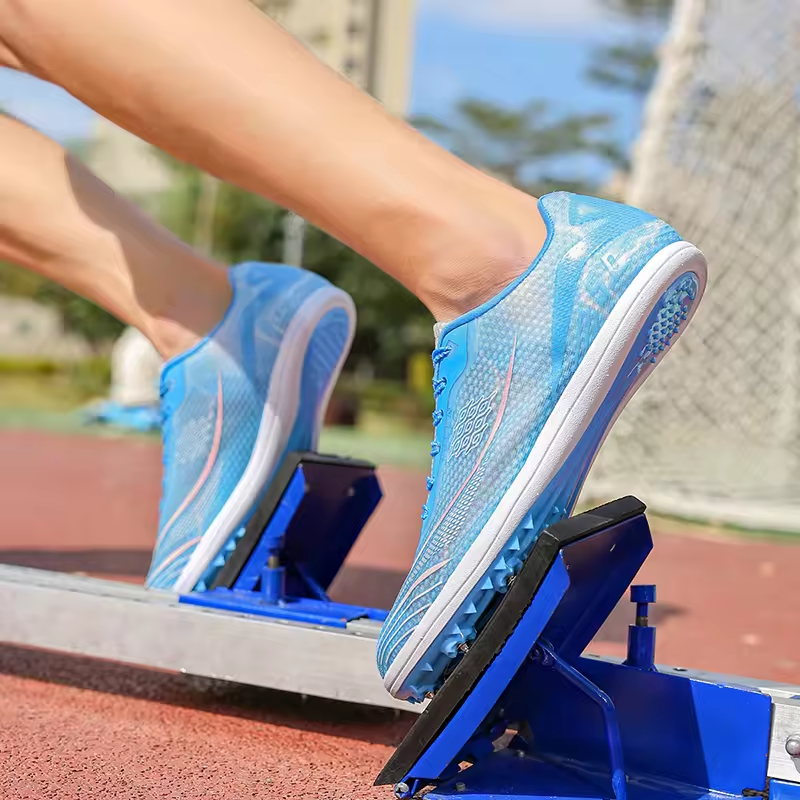
How to Properly Fit Running Shoes for Optimal Support
Getting the best running shoes for shin splints is a step in the right direction. However, even the best shoes need to fit correctly to offer the optimal support. Here’s how you can ensure a proper fit:
- Measure Your Feet: Your foot size can change over time. Measure your feet or have them measured every time you buy new shoes.
- Try Them On In The Afternoon: Your feet naturally expand during the day. Try on running shoes in the afternoon for the best fit.
- Wear Proper Socks: Wear the socks you run in when trying on new shoes. This helps gauge the true fit.
- Check The Toe Box: Ensure there is about a thumb’s width of space between your longest toe and the end of the shoe.
- Ensure a Snug Heel: Your heel should fit snugly in the shoe with minimal slipping.
- Walk Around: Walk and even jog a bit in the store to assess comfort and support.
- Consider Width: People often ignore width, but it’s crucial. Make sure the shoe is not too tight or too loose across your foot.
- Pay Attention to Arch Support: The shoe’s arch support should match the contour of your foot to prevent overpronation or underpronation.
Fitting your running shoes correctly can make a substantial difference in preventing and managing shin splints. Remember, even the best running shoes for shin splints won’t help if they don’t fit well. Take the time to find a shoe that supports your feet in all the right places.
Additional Shin Splints Prevention Tips for Runners
Besides wearing the best running shoes for shin splints, other practices can help prevent this painful condition. Here are some additional tips that runners should consider to avoid shin splints:
- Mix Up Your Workout Routine: Don’t just run. Include lower-impact exercises like swimming or cycling. This can reduce the stress on your shins.
- Increase Intensity Gradually: If you’re ramping up your training, do it slowly. Sudden increases in workout intensity can lead to shin splints.
- Strengthen Your Lower Legs: Work on exercises that build calf and ankle strength. Stronger muscles support your shins better.
- Use Proper Technique: Pay attention to your running form. Avoid heel striking and try to land on the midfoot.
- Stretch Before and After Runs: Always stretch your calves and shins. This improves flexibility and blood flow.
- Consider Your Running Surface: Run on softer surfaces when possible. Concrete and asphalt are hard on your shins.
Following these tips, along with wearing shoes with the right fit and features, can greatly reduce the risk of developing shin splints.
Understanding the Role of Insoles and Orthotics
Insoles and orthotics can be a runner’s best friend, especially when combating shin splints. These shoe inserts play a key role in providing the extra support and cushioning that your feet might need. Here’s why considering them can be beneficial:
- Customized Support: Orthotics are custom-made to fit your foot’s unique structure. They can correct abnormal walking patterns and distribute pressure more evenly.
- Improved Cushioning: Insoles can offer additional cushioning that may not be present in running shoes alone. This helps in absorbing the shock that your shins might otherwise have to endure.
- Better Alignment: Both insoles and orthotics can help align your feet properly. This is crucial in preventing overpronation or underpronation that contributes to shin splints.
- Enhanced Comfort: They can make your running shoes more comfortable, reducing the strain on your shins and overall leg muscles.
- Prolonged Shoe Life: By improving the interior fit of the shoe, insoles and orthotics can also prolong the life of your running shoes.
Remember, while insoles are readily available, orthotics are typically custom-made. Visit a podiatrist if you think orthotics might be necessary for you. Always ensure they complement the best running shoes for shin splints in function and fit. Combined, they offer a powerful defense against the discomfort of shin splints.
When to Replace Your Running Shoes to Avoid Shin Splints
To prevent shin splints, it’s essential to know when to replace your running shoes. Running in worn-out shoes can contribute to the pain associated with shin splints due to a lack of cushioning and support. Here’s a quick guide on the signs that indicate it’s time for a new pair:
- Tread Wear: Check the soles. If the tread is worn down, it’s time for a change.
- Cushioning Feels Flat: If your shoes don’t spring back like they used to, they’re likely too old.
- You Feel More Pain: Increased shin pain during or after running hints at poor shoe support.
- Mileage Check: Running shoes generally last 300-500 miles. Track your mileage.
- Shoe Age: Most running shoes need replacement every 6 months, depending on use.
Changing your running shoes at the right time is crucial for shin splint prevention. Pair new shoes with proper fitting, insoles, and orthotics for the best protection. Remember to find shoes with the right support, cushioning, and fit to continue running pain-free and safe from the risk of shin splints.
